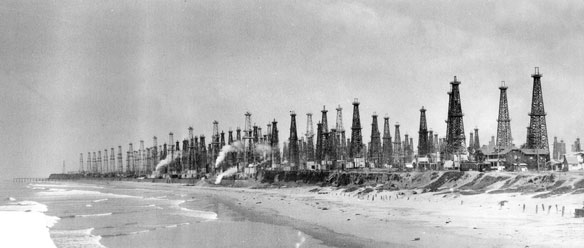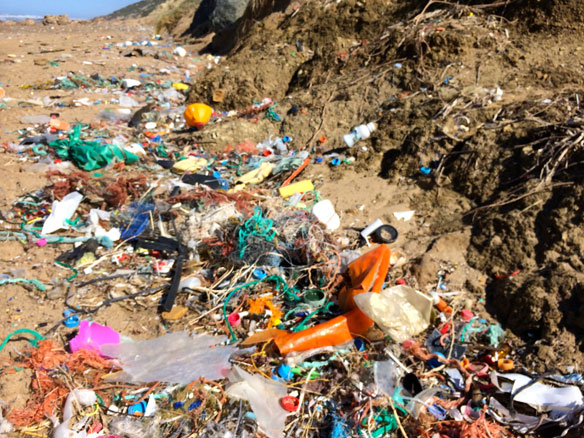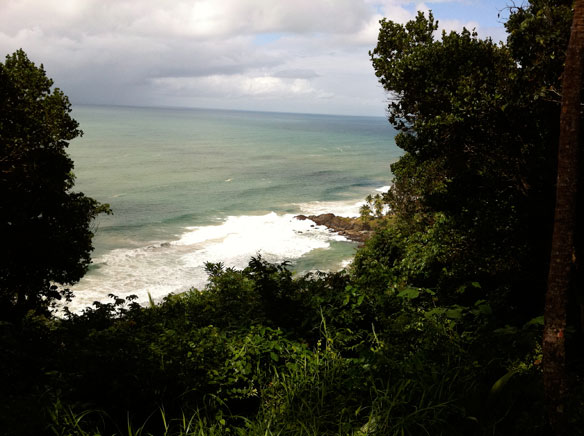Estimates of offshore drilling’s benefits exaggerated, report says

A report released Tuesday and prepared for the Southern Environmental Law Center, contends that the potential economic benefits, as cited in a prior report released in 2013 by the American Petroleum Institute, have been exaggerated and don’t take into account the potential loss of jobs in tourism, commercial fishing and other business sectors.
New research sheds light on mercury pollution in estuaries, food chain

Mercury, which is transformed into methylmercury in water, is a global pollutant that damages human health. Most people are exposed to mercury by eating fish, particularly from open ocean and coastal fisheries. Estuaries act as a repository for methylmercury, storing toxic particulates in both the sediment and water column.
White sand, black gold: when oil derricks loomed over California beaches

As California population boomed in the decades following the gold rush of 1849, there was a rapidly growing demand for petroleum. By 1920, California was producing 77 million barrels of oil a year, and vast stretches of the state were occupied by derricks, and refineries. In coastal places such as Venice, oil derricks ran right up to the shore, mingling with residential neighborhoods and pristine beaches.
Higher Levels of Fukushima Cesium Detected Offshore

Scientists monitoring the spread of radiation in the ocean from the Fukushima nuclear accident report finding an increased number of sites off the US West Coast showing signs of contamination from Fukushima. This includes the highest detected level to date from a sample collected about 1,600 miles west of San Francisco.
Even the tiniest plastics found in the sea with new technology

Studies have estimated that each year between 4 and 12 million tonnes of plastics end up in the sea, and that the figure is expected to double over the next ten years. But we have only begun to learn what happens with the plastics afterwards. Scientists have now developed a method that can measure the microplastics that other methods overlook.
Mud From Brazil Dam Burst Is Toxic, UN Experts Say

The scale of the environmental damage is the equivalent of 20,000 Olympic swimming pools of toxic mud waste contaminating the soil, rivers and water system of an area covering over 850 kilometers.
Mining Waste Reaches Brazilian Coast Two Weeks After BHP Dam Collapse

The tide is expected to spread along a 5.5-mile stretch of coastline, threatening the Comboios nature reserve, after killing plants and animals along 400 miles of the Rio Doce.
Biodegradable Plastics Are Not the Answer to Reducing Marine Litter, Says UN

Widespread adoption of products labelled ‘biodegradable’ will not significantly decrease the volume of plastic entering the ocean or the physical and chemical risks that plastics pose to marine environment, concluded a UN report released today.
Brazil Dam Toxic Mud Reaches Atlantic Ocean Via Rio Doce Estuary

A wave of toxic mud travelling down the Rio Doce river in Brazil from a collapsed dam has reached the Atlantic Ocean, amid concerns it will cause severe pollution.
